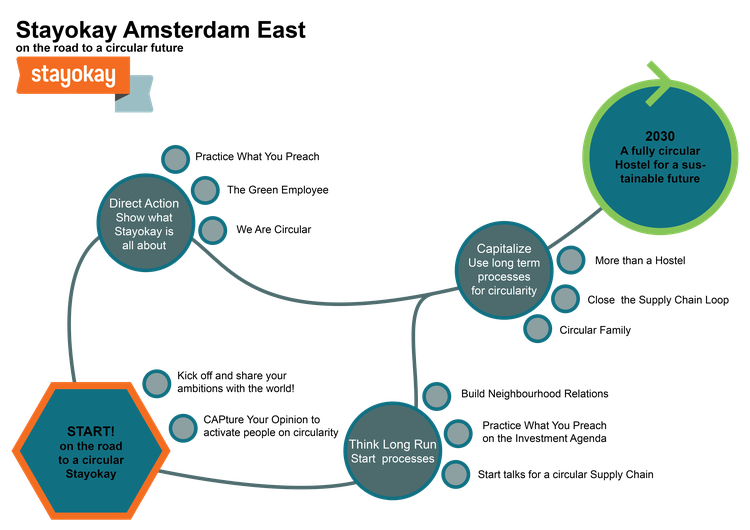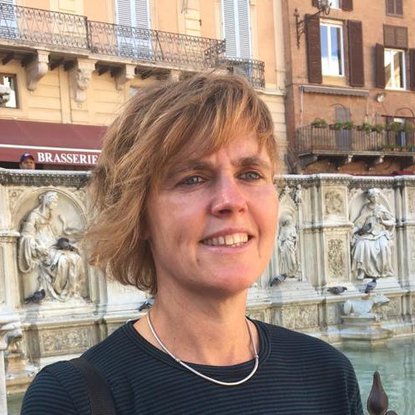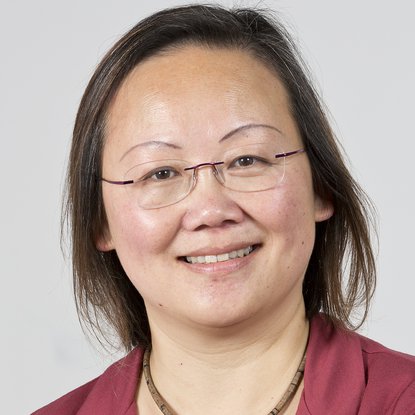Over the course of two months, the students looked into two metropolitan challenges and were challenged to research and design solutions. The first case was to incorporate climate-adaptive functions in the renovation of Amsterdam’s historic quay walls. The other case was to advise Stayokay Amsterdam East on how to become fully circular in 2030.
Both projects are a good example of how students from MSc MADE are challenged to research and find innovative solutions to metropolitan challenges. Master MADE focuses on the metropolitan challenges of Amsterdam as a booming city, using Amsterdam as a case study and a living lab. Set-up in collaboration with AMS Institute, the program connects students to real-life cases, business, the city and its citizens – training them hands-on for the multidisciplinary challenges of today’s and tomorrow’s cities. This year in Metropolitan Solutions, the students focused on two different cases.
Presentation of the 'Quay Walls' case as part of the course Metropolitan Solutions
Case ‘Quay Walls’
Quay walls functions as an earth retaining structure that separates the flowing water in the canals from the busy street level activities. Serving such a function is tremendously important for the vitality of a water city and its vast infrastructure network. Other than its function, Amsterdam’s quay walls also represent historic heritage as the quay walls found in the city’s historic centre are UNESCO protected. Due to quay walls showing structural instability as they have reached the end of their design lifespan, the renovation of 200 kilometers of quay walls gives the municipality of Amsterdam the opportunity to also address other challenges such as the impact of climate change on the city.
The impact of climate change in urban areas can be addressed using climate-adaptive principles. This means planning, designing, and engineering be resilient to more extreme environmental conditions. Therefore, a group of 16 students sought to answer, “how can climate adaptability be integrated into quay wall design in the city center of Amsterdam?”.
Before generating advice, the group was divided into four expert groups that were tasked to research climate change impacts, technical analysis, climate adaptive solutions, and public space. Each of the four expert groups offered recommendations based on their perspective. Recommendations from the expert groups were then mixed and matched for synthesis purposes in order to give the municipality integrated advice on how to include climate adaptivity in the renovation process of quay walls. The synthesis resulted in giving advice through a roadmap with subsequent tools in each of the steps. To demonstrate how the roadmap and its tools can be used, three locations in the city center were chosen as showcases: Lijnbaansgracht, Herengracht, and Entrepotdok. These three locations represent the four perspectives from the expert groups into integrative and eye-catching designs that seek to not only introduce climate adaptive solutions but strengthen social cohesion in the areas surrounding the quay walls.
The end products included the four expert reports, an advice report, and an interactive website. During the final presentation, the end products were revealed to the municipality case owners, guests from the AMS Institute and course coordinators. The presentation and advice report can be found in the municipality’s open research portal. The work, advice given and information about the team can also be quickly accessed through one click.
Case ‘Stayokay Amsterdam East’
Within the tourism sector, accommodation facilities, such as hotels, Bed & Breakfast and vacation parks are major users of non-renewable and scarce resources. As the tourism industry largely relies on cheap and easy accessible, finite resources, this sector reflects the linear take-make-dispose model. It is important to change this linear take-make-dispose model in the hospitality sector to a more circular one, in which resources are kept in use by ‘’closing the loop”. Stayokay, the largest and oldest Dutch hostel branch, is a frontrunner in the field of sustainable hospitality. They are working hard to become totally circular in 2030. Stayokay Amsterdam East (AE) asked a group of 17 MADE students to help them in reaching this goal.
Because circularity is a broad concept the group of students was subdivided in four groups for the analysis: behavioral change, technology, sector and scenario. Their analyses were combined into a synthesis report. In this report, the group answered the following research question: "How can the improvement and introduction of interventions at Stayokay AE help with reaching their goal of becoming circular by 2030, using analysis of current technical innovations, behavioral change, and the accommodation sector while taking into account the most likely scenarios?"
In addition to a large report with many specific recommendations, they developed the following vision for Stayokay AE: “Our vision for Stayokay Amsterdam East by 2030 is a place with staff that is educated on and engaged with the topics of sustainability and circularity, who are willing to teach guests how to behave sustainably throughout the city of Amsterdam. A place where waste streams are minimal, due to the circular technological interventions that have been put in place over the past 10 years. A place that is a safe haven for people from the neighborhood to learn, chat, drink coffee or work away from the office. A Stayokay that plays a key role in the hostel sector in Amsterdam as an inspiration for others on the topics of sustainability and circularity.”
This vision is expressed most clearly by the roadmap they created:

Stayokay Amsterdam East: A roadmap to a sustainable fututre
They also created a tangible product to kick-off the roadmap: the Capture Your Opinion chalkboard. This is a board for both employees and guests of Stayokay AE, where one statement or question related to circularity is placed with three possibilities to answer. This creates the opportunity to vote and leave a comment or recommendation related to circularity or sustainability. To inform, inspire, and create consciousness about circularity.

